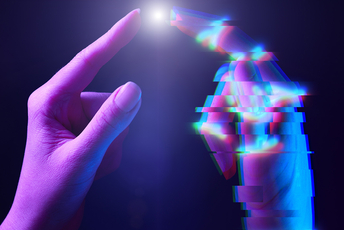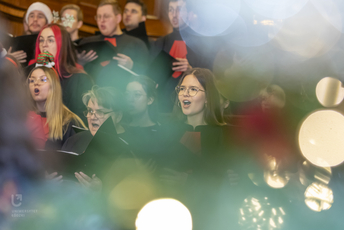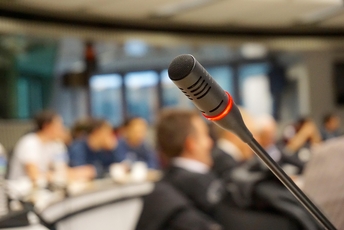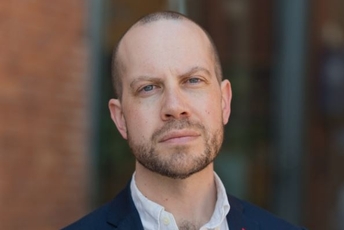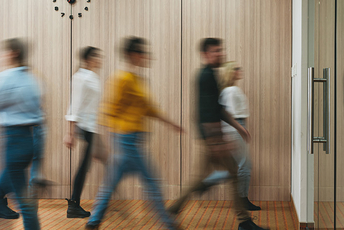Successfully practicing his painting craft, Piotr Stachlewski turned to photography and consistently, for many years, has been recording hundreds of views of the city, dominated by graffiti made by RTS and ŁKS fans.
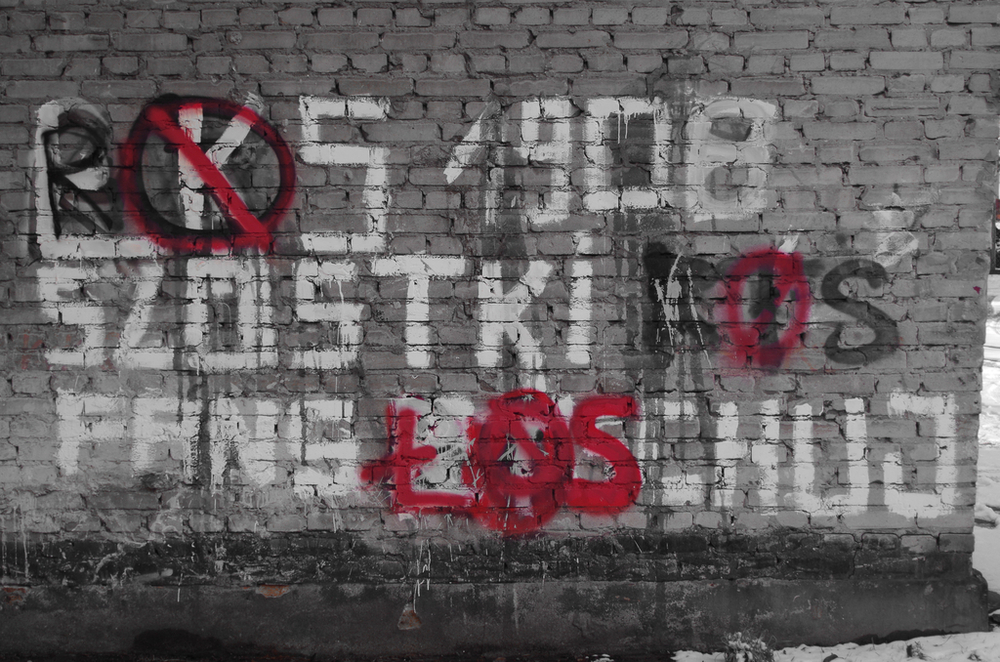
These photographs, which only seem to be quotations from reality, record excruciating violence and helplessness. People performing these acts of visual vandalism are probably fulfilling their need for agency that they cannot fulfil n a more creative way. Sports clubs have assigned them the role of spectators who are able to release their emotions only in the form of aggressive behaviour, sometimes leading to violence. It is also visible in the content and form of the graffiti. Due to the fact that these works are not permanent and often constitute a form of challenge demanding a response, they are modified by fans of rival groups. These changes concern both form and content. We observe a kind of visual language that serves to exchange insults and defend as well as boast about the heroism of one's own team and its fans. This way, overlapping layers of inscriptions are created, which are painted over by the owners of the properties
– explains Marek Domański, the exhibition curator.

Hatred on the walls is expressed by the expression of the letters, the structure of the entire inscription and the vulgarity of comparisons. The text on the wall is intended to insult, mock and compare it to what is the worst for the "fan’s" mentality
– adds the artist.

The images presented at the "Krew miasta" [Blood of the City] exhibition may give the impression of a dispassionate registration of the phenomenon – one of the manifestations of the meta-object that modern sport has become. However, they are the result of the author's attitude, which is far from indifferent. He feels a deep need to respond to the visual violence manifested on a gigantic scale. This is not a neutral record, but an emotional attempt to point out an important, multidimensional problem. Reducing oneself to black, white and red is an important decision that indicates a strong emotional commitment. However, this does not exclude the documentary nature of these photographs
– concludes the curator.
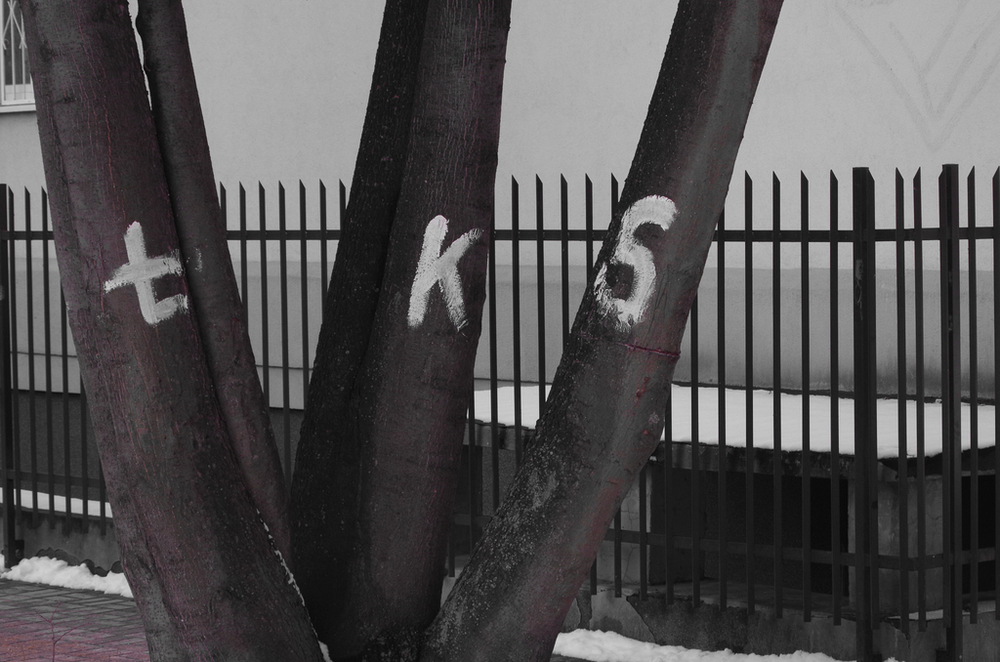
Unfortunately, some of the examples of the graffiti contain anti-Semitic themes. Professor Wojciech Woźniak, who deals with, among other things, sociology of sport and the topic of cheering, comments on the topic.
There have been no Jewish sports clubs in Poland for over 80 years. And stadium-related anti-Semitism is flourishing. Anti-Semitic graphics and chants are associated primarily with Lodz, Krakow and Rzeszów. In Krakow, Cracovia fans, called Jews, "took over" this epithet. You can see the Star of David on their flags, scarves and graffiti, and it is no coincidence that the club's stadium at Kałuży is sometimes called the "Holy Land". Historically, Cracovia was a multicultural club that did not pose any barriers related to religious or ethnic identification. Wisła, in turn, was one of the first Polish clubs to adhere to the numerus nullus principle and employ only Poles of the Roman Catholic faith. We are talking about the pre-war period of course. In the last dozen or so years Maor Melikson, a representative of Israel, at one time a leading player in the Polish league, was one of the biggest stars of Biała Gwiazda
– points the scientist.
In Lodz, the two most famous football clubs had people of Jewish origin among their founders, but for both of them the "Jewish" one is the rival. There is no positive "taking over" of an epithet that is supposedly offensive and making it an element of one's own identity, which is what we are dealing with in the case of Cracovia, Tottenham in London or Ajax Amsterdam. This contributes to consolidating the image of Lodz as a particularly anti-Semitic city, even though fans of ŁKS and Widzew are also insulted with anti-Semitic insults by fans of teams from outside our city, on walls, in stadium chants, and nowadays on Internet forums. Some of the graffiti on the walls of Lodz contain caricatural images of Jews that cartoonists of Nazi newspapers from the 1930s would not be ashamed of. One of such paintings lasted for months on the wall of a garage on Pasterska Street, on the premises of the Litzmanstadt Ghetto, just a dozen or so meters from the church and no more than 150 meters from one of the moving murals from the "Children of Bałuty" series, commemorating the youngest victims of the Holocaust in our city. After my intervention, it disappeared, only to "grow back" in a slightly milder form after a few weeks
– adds the sociologist.
Many people understate the importance of such inscriptions and drawings. They claim that such anti-Semitism without Jews (no more than 15,000 people in a country of 40 million people declare Jewish identity) is meaningless and that the inscriptions and slogans of this type are not harmful, since they do not concern "true" followers of Judaism or citizens of Israel. It's not true. The very fact that these "language fossils", as Joanna Tokarska-Bakir calls the anti-Semitic clichés present in our language, are so durable, reflects poorly on our education. Accustoming subsequent generations of young fans to the fact that insults based on ethnic hatred are harmless contributes to the disregard of other forms of xenophobia. The fact that anti-Semitism has been present in Polish public debate and political discourse for years, although with varying intensity, is partly the result of neglecting this problem in the public sphere, also in the fan context
– concludes Prof. Woźniak.
ABOUT THE ARTIST
Piotr Stachlewski was born in 1964 in Lodz. He studied at the Faculty of Graphics at the Strzemiński Academy of Fine Arts in Lodz over the years 1983-1988. He has been working at his alma mater since 1987, progressing through all levels of the academic career. He was the Head of the Department of Painting, Drawing and Sculpture at the Faculty of Graphics and Painting in the years 2008-2012 and he received the title of a Professor of Fine Arts in 2015. Currently, he is the Head of the Painting and Interdisciplinary Activities Studio at the Institute of Painting and Drawing. He is a member of the University Council of the Strzemiński Academy of Fine Arts in Lodz in the 2021-2024 term. He is renown for his creativity in the field of painting, graphics and ceramics. He took part in over 200 individual and collective exhibitions in Poland and abroad.
He has been honoured with numerous awards, including: Honourable Mention at the National Young Painting Exhibition, Eugeniusz Geppert Competition in Wrocław in 1996, Grand Prix at the 1st Ludwig Meidner National Graphic Competition in Oleśnica in 2008, 3rd Prize at the 10th Polish Woodcut and Linocut Quadrennial in Olsztyn in 2011. He also received a distinction in the Surface Impressions competition in Lincoln, (NE) USA in 2020.
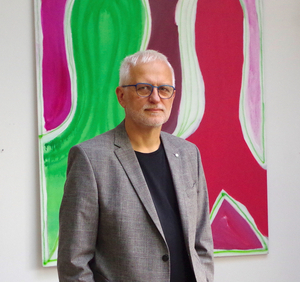
ABOUT THE CURATOR
Marek Domański is a photographer and an academic teacher, who is active in the field of visual and journalistic creativity. At exhibitions, he presents staged and documentary photographs, as well as objects and drawings. He is an author and co-author of several monographs and other publications. Marek Domański is also a curator and co-creator of research projects. He works at the Strzemiński Academy of Fine Arts in Lodz, where he is responsible for the Photographic Imaging Studio at the Institute of Photography and Multimedia.
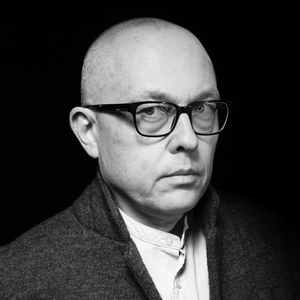
Prof. Marek Domański
Source: Marek Domański and Piotr Stachlewski
Edit: Bartosz Kałużny (Communications and PR Centre, University of Lodz)
The mission of the University of Lodz is to conduct reliable research and actively disseminate facts and research results so as to wisely educate future generations, be useful to society and courageously respond to the challenges of the modern world. Scientific excellence is always our best compass. Our values include: courage, curiosity, commitment, cooperation and respect.

![[Translate to English:] Plakat Noc Biologów 2025](/fileadmin/_processed_/e/0/csm_post_fb_65b3220768.png)
